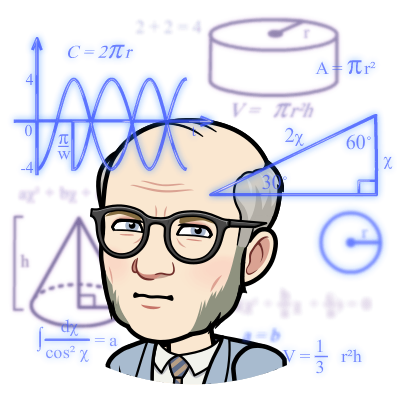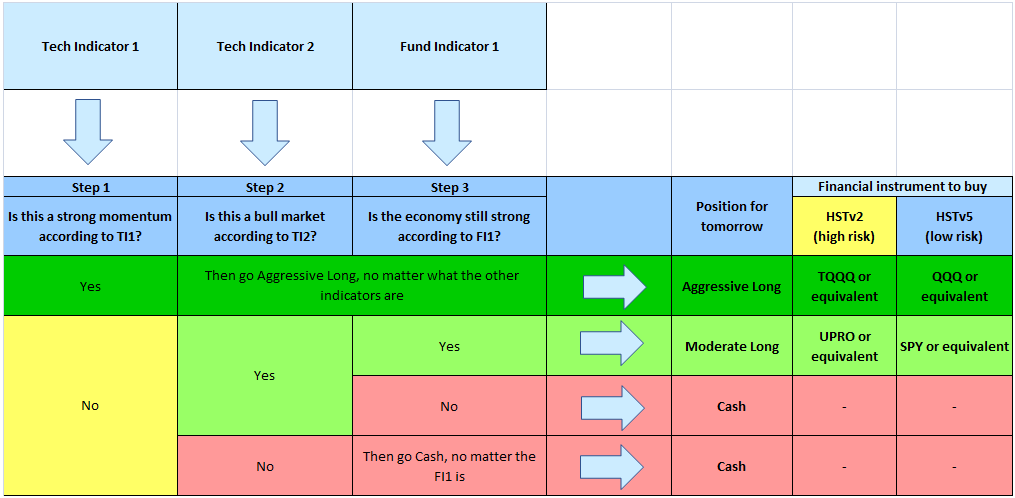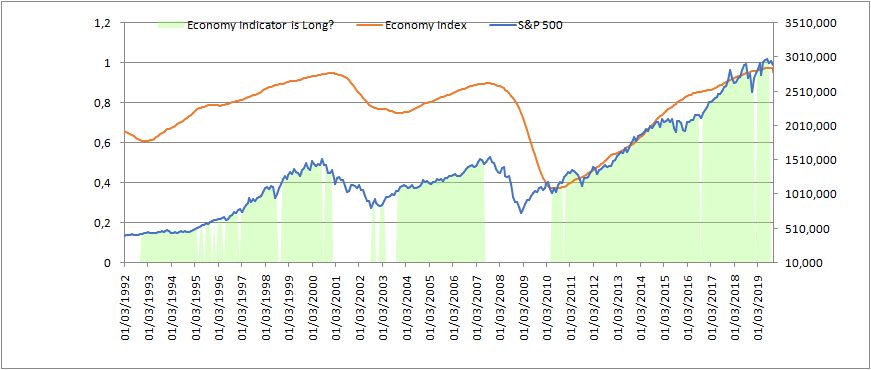 Purposes of the HST model
Purposes of the HST model
Hari Seldon Trader is an investor who has built up a model to manage his savings and long-term investments. HST saves some money every year, so he is cumulating some capital. He doesn't need this capital for his daily life, and he would like to see it grow for his family needs, or for future investments of other kind.
The US stock market seems the right place to do this, but among a thousand models and strategies, none seems to fully convince: the fundamental premise is that yes, the stock market grows, but the it also exposes investors to risks of drawdowns if you Buy and Hold single stocks.
Performance of the HST model
What about a 55.8% average annual yield (with 3x leverage) or a 18.0% average annual yield with no leverage?
Read the backtested performance of the HST model
Strategies for trading: some lessons from "The Intelligent Investor" by B. Graham with notes by W. Buffett
Many strategies are advertised on the internet, models and techniques that promise miracles, original ways to pick stocks that will grow in future, technical models to anticipate breakouts and rallies. Years ago Benjamin Graham and Warren Buffett clearly highlighted in the milestone book "The Intelligent Investor" that in the real world no model has shown to be able to beat a simple B&H strategy in the long run.
I would like to summarize here some topics from that book, which seriously question the reliability of many predictive models.
Before buying shares of individual companies, to be considered for purchase as long-term investments, it is necessary to first know them, judge their business environment, skills and background of the management, the perspective of the sector where the company operates and the strategic position of the company in that sector ... all this knowledge does not come for free and requires great effort and time for daily analysis.
Hence the thesis of Graham and Buffet: if you do not fully understand the companies in which you invest, you will never beat the market, because market is the best judge to select the best companies.
It is therefore better to invest in an aggregate index such as S&P or NDX, and this as much as we can achieve.
Why does Graham contest the effectiveness of the strategies (especially of technical analysis) and the fact that they can beat the market in the long run? For 2 basic reasons:
1. backtests are data-mined
2. when a strategy proves to work well, as soon as it is published it immediately stops working, because it becomes mainstream, and influences market's behavior
With these ideas in mind and coming to the present day, the performance of the financial markets during the decade 2009-2019 is an excellent example: the market has grown almost continuously.
Did any new model or strategy emerge and outperforme the market somehow? Looks like none did.
An investor who had bought and sold dozens or hundreds of stocks in ten years would almost certainly has made money. But has he made any better than S&P or NDX? According to the ideas of Graham and Buffet most likely not, because this investor:
- would have had a long list of wins and losses in their trades
- should have spent a lot of time in analyzes, readings, operations
- would have had at any moment only a part of the capital invested, another part (often the largest) not invested, blocked in the doubt of which securities to buy and in the search for the perfect timing
I think these conclusions are really solid: if we try to analyse the individual trades made by many investors or traders, and we backtest the average return, we would probably realize that few or none have beaten the market.
HST does not contradict Graham-Buffet's theses, rather agrees with them. HST assumes that, as investors, we will not do better than the market, so we give up selecting individual stocks and making detailed analyses: we rely on aggregate indexes in a "Buy and Hold" strategy, using tools that are available today and that replicate the behavior of indexes, the ETFs.
With these tools, it is like if we were buying a diversified group of securities, without struggling to buy many single stocks in a number of trades.
Buying and selling the entire market index, as G+B say, is the best choice.
This will save us from much wasted time in analysis and studies, and also from many single losses. We will have to abandon the "gut feelings" that we feel on the single title and that would push us to buy or sell on the basis of emotions, and buy an ETF that replicates the entire index.
The added value of the HST model
So which is the added value of the HSTM? Is it just a B&H strategy applied on an ETF replicating the S&P500?
The HST model is not a pure B&H strategy. There is an important exception that Graham and Buffet have not considered in the book:
HST has managed a way to step aside and stay cash during bear markets.
The weak point of B&H strategies is facing big losses during bear markets.
If we look at the decade 2009-2021, the B&H strategy is the best strategy ever: a lucky investor would surely have enough made money by positioning Long on S&P in 2009 and then forgetting it for the next 10 years. Using leveraged ETFs he could have made terrific returns, with no efforts. Amazing.
But in 2009, at the end of the most disastrous financial crisis in history after 1929, who was really expecting ten consecutive years of bull market? Who has really bet on this, and played the card of a 3x leverage? Going Long, applying B&H with a 3x leverage would have been a big, lucky guess.
Indeed, let's consider an opposite case, and ask ourselves: what would have happened if the same investor had applied the same B&H strategy in early 2000? A disaster!
Indexes lost 55-77% in less than two years, and the leverage effect of 3x ETFs would have practically burned the 99.9% of any invested capital (G+B advise is not to use leverages).

We must realize that the stock market is not only made of bullish decades as 2009-2021,it is also made of scary bear markets, such as those of 2001 and 2008 and by important corrections such as that of Q4 2018.
HST is a long-term investor, as we said in the introduction, he has no urgent need for that money, but neither does he want to see it destroyed by a stock market crisis.
And financial crises happened many times. How can we avoid them?
HST has created a mathematical model, based on technical indicators and fundamental analysis that can guide investors to:
- invest in the US stock market during bull markets (growth phases)
- magnify the performance using 3x leveraged ETF (it is only an option, one can also apply the HSTM with no leveraged ETFs)
- stay invested most of the time, because staying cash for a long time affects performance
- (most important) exit the market during the bear markets and significant corrections
HST has therefore identified and tested a mathematical model that can walk through both the bull markets and the bear markets, suggesting to move among three positions:
- Aggressive Long (AL) in the periods of greatest momentum of bears and bull markets (investing in the NDX technology market)
- Moderate Long (ML) in moments of weaker momentum, pushing investor to a slightly less risky position, covered from big drops
- Cash during bear mkts or main corrections, in order to save capital and be ready to start again when the economy starts to recover
There are 5 different application variants of this model, with different degrees of risk, explained here
This also accords with the theses of G+B that suggest not to care about possible drawdowns and to evaluate the fact that the economy will still grow, therefore temporary volatilities should be neglected. The important thing is not to go into purchasing when the prices of the companies are overvalued. Instead, they were underestimated in 2009.
Does really HSTM predict financial crises and recessions?
HSTM does not predict anything, it interprets some fundamental data of the economy and derives a probability that the market is overpriced and/or economy is not growing, and that there may be a crisis (read article on TA and FA).
Such crises lead to bear markets, which bring:
• a rapid drop in the valuations of companies (which were probably previously overvalued) and therefore makes them more attractive for purchases at the end of the crisis
• greater risks of triggering an economic recession, due to the drop in consumption.
These conditions are not typical of bull markets, when expenditures pushed growth (particularely true in US, not in other countries). With falling expenditures, a negative spiral is triggered, which can last for a few months or few years. Here is the time to put the capital into cash and wait for the economy to recover.

Nobody is able to accurately predict the exact time when a bear market is triggered, or when growth will start again: it will always depend on the behavior of men, entrepreneurs, politicians, consumers.
So HSTM will push investors to Cash some time after the market peaks, or to Aggressive Long a bit after the bottom.
Other advantages of the HST Model
Apart from the amazing yields and reduced drawdowns, the HST model shows other advantages:
No more chained to computers
HSTM is therefore a strategy that does not operate more than once a day (no intraday, no swing), on average around 10-20-30 trades per year (see here).
The HST releases one (only) signal at the end of the trading say. It does not require you to stay on the PC all day (insert article how to receive signals and how to operate).
We believe that often staying on the PC all day to try to find daily highs, short flare-ups, spikes of a few decimal places and intra-day drops is
• a huge waste of time and perhaps, even worse...
• ...counterproductive work: there are algos doing this job much better
No miraculous performances, no gut feeling, but perseverance and analysis
By its own definition, HST (as it replicates the trend of the indices during the bull markets, and goes into Cash during the bear markets) performs as well as the market during the bull market. It does no better than it, except for the fact that it supports Nasdaq which usually outperforms S&P.
But, unlike the B&H strategy, which holds stocks even during crises, HSTM pushes to exit the market and to put on cash during recessions and financial crises.
During bear markets the model positions investments to Cash, often for many days, and this can generate boredom in the most active traders. But it is a boredom that saves your capital.
However, it should not be underestimated (new article about boredom).
Conclusions
HST does not pretend to predict the future, but to read it critically and direct investments accordingly.
It does not pretend to do better than the market, but tries to ride it in moments of growth.
Thanks to the maths by applying the positions suggested by the model, the capital is better preserved from the most severe crises, drawdowns are much more menageable, and it is possible to apply instruments such as leveraged ETFs (for investors with a high risk profile: the trade-off between expected returns and expected risks becomes a personal choice of each investor).
(article whether to use 1x or 3x)
Popularity killed the strategy stars
In the book "The Intelligent Investor" G-B argue that any method, algorithm or strategy stops working as soon as it becomes public (article - in which you also say what is popular and what is not): as soon as it is spreads many people will copy it and this will drag to zero its positive effects (example of the baseball strategy or a chess witch).
This is the reason why we do not want the HST Model become too popular
• will remain an intellectual property which will not be revealed in its mathematical detail. Those who know this algorithm are currently less than 5 people, who have signed an NDA
• the daily signals will be offered to members, up to a maximum number of 150-200 followers
How can I receive clean, effective signals like this below, from HST?
Subscribe to our educational service and get daily signals, writing to This email address is being protected from spambots. You need JavaScript enabled to view it..
